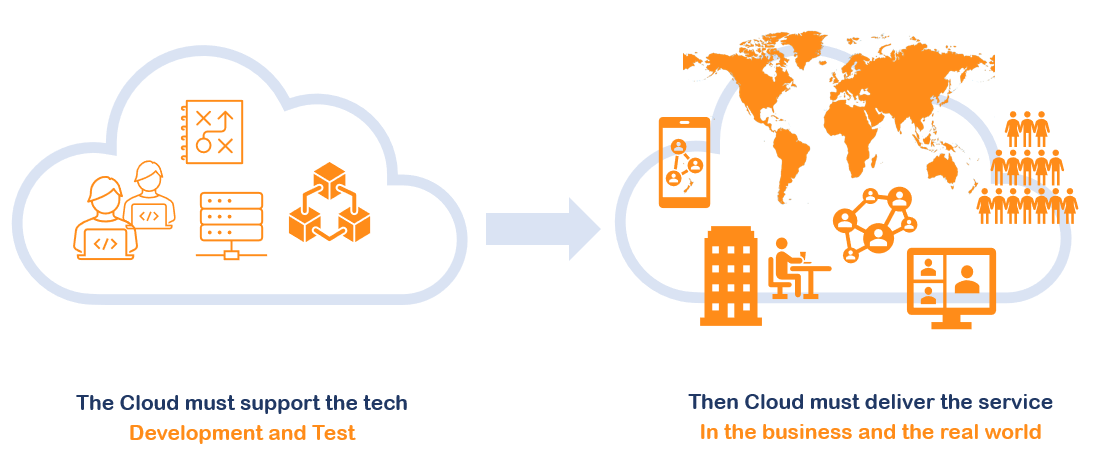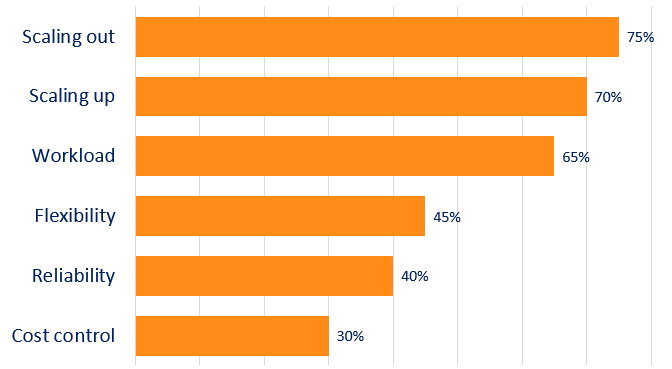Cloud held out great promise – “All you can eat, whenever you’re hungry, you only pay when you’re eating, and you don’t have to own the kitchen!”. This is often still the dominant message. These things are all true but as dependence on Cloud usage has deepened, the practicalities have emerged and are becoming unignorable for businesses in the real world.
For technologists, Cloud is an amazing buffet with a vast spread of enticing dishes laid out within easy reach. Everything you could possibly want, and the range is growing all the time. It’s all so easy to heap the stuff on your plate. Realistically, few technologies are so specific that they can’t be implemented inside the Cloud of any provider. Some may be a little better here or simpler there, but most core technology stacks can be implemented inside most Cloud providers.
This is where the operational challenges begin, and few of them – very few – are technology headaches. Yet Cloud is so frequently seen as a technology with decision making dependent only on technology considerations.
It’s when technology services move into the real world of delivery that the fun starts. There continue to be technology issues, of course: “why doesn’t this bit work; that bit breaks when it gets heavy usage; we need it to work this way, not the way you’ve done it.” All those technical issues remain headaches for the devs to fix, as always. That’s their day job.
Beyond the lab, beyond the application that’s been built, Cloud is a delivery infrastructure that connects the service to where it’s needed, and this is where the headaches begin for Operations. Service delivery is the real world where technology meets customers and usage, where costs are measured, and where all these things are judged by the business and found to be acceptable or not.
Delivering acceptable service in a changing world is very different from developing working functionality in the lab.
In our conversations with decision makers in tech enabled businesses, we’ve heard about the challenges of delivering services in the operational realities of growth and change, Scaling up and scaling out are the biggest problems areas for operational teams, predominantly because changing demands reveal the unexpected and unanticipated issues of Cloud delivery. Most operational teams expect software issues as a part of life, but the constraints and dynamics of Cloud are unexpected.
As the business demands, customer usage and market realities pull and push services, operational decision makers have to deal with the implications of the way Cloud performance, pricing and support work in practice in the dynamics beyond development, beyond the functionality the service is designed to deliver. In our conversations with these decision makers, we’ve seen that responsiveness to the practicalities and demands of change dominate thinking.
Operational dynamics are the drivers of delivery success and failure. Costs can prove uneconomic; management and support of delivery is frequently overlooked in budgeting workload; the operating characteristics of different Cloud providers become important factors in success when delivery begins in earnest.
This real world delivery is the challenge that falls to Operations. The issues are business issues, driven by technology choices. The irony is that for all its promise of service on demand, delivering to changing demand is what causes significant issues. Ironic, too, is that while Cloud is a technology, it’s business that feels these pains, not technology.
These are business and operational challenges, and the choices are best weighed up against these considerations.
New independent Cloud support partners are emerging that specialise in the field of optimising and supporting Cloud infrastructure for Operations. These firms are not resellers and have no blanket preference for one brand or technology over others. Their independence and breadth of experience equips them to help business decision makers find the right Cloud solutions for their particular circumstances, objectives and ambitions, and their capabilities make them ideal partners to work alongside operational teams to deliver service that’s dynamic, resilient and cost effective.
Independent Cloud support partners can bring to bear a range and depth of expertise and perspective that are nor core skills in dev teams. More importantly, these specialist teams can deliver the flexible support to match operational demand without distracting dev teams from their responsibilities.
In the tech enabled world where service quality matters, operational delivery of Cloud infrastructure has become a critical factor underpinning business achievement and success. Specialist partners are the travelling companions that can make the difference as real usage grows and changes, and the Operations has to adjust delivery to meet these demands.
Peter is chairman of Flexiion and has a number of other business interests. (c) 2021, Peter Osborn


